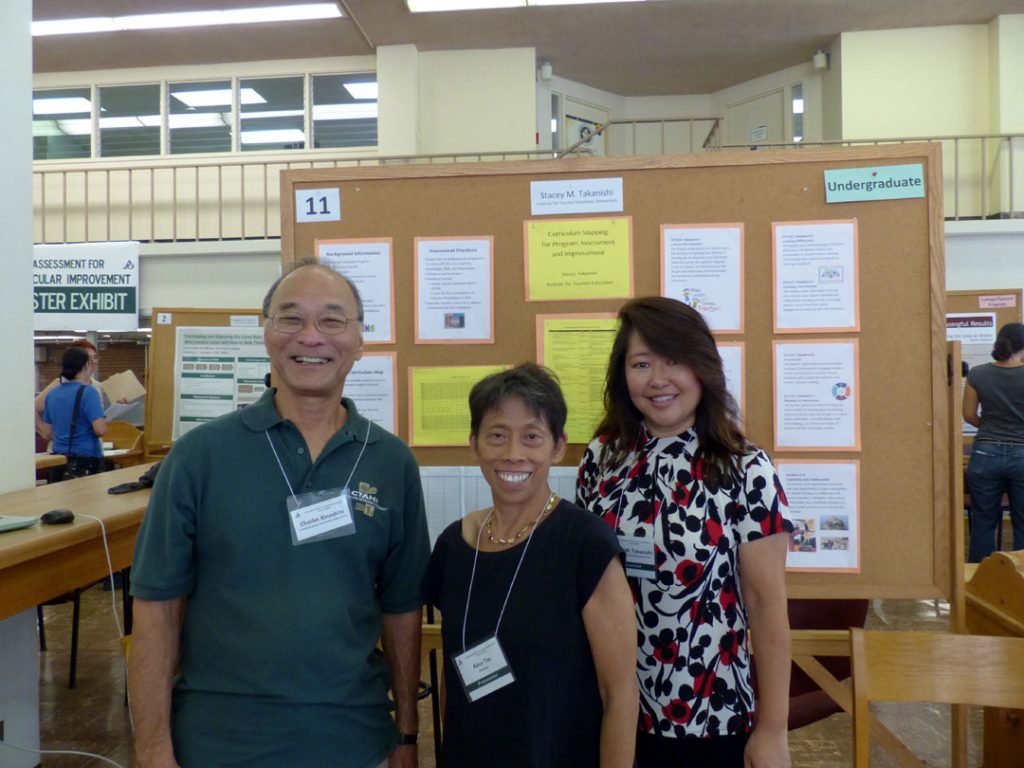
The Elementary Education Program (EEP) has about 30 instructional faculty and field supervisors who serve about 200 elementary teacher candidates every semester. The EEP offers undergraduate degrees in Elementary, Elementary and Special Education, Elementary and Early Childhood Education and certificates for teaching Multi-Lingual Learners. The EEP continuously uses assessment for formative and summative, and internal and external (national accreditation) purposes. Although we have established checks and balances to ensure that our graduates are prepared to be successful first year teachers, we are currently waiting for the Hawaii Teacher Standards Board (HTSB) and the Center for the Accreditation of Educator Preparation (CAEP) to make policy decisions about requirements for recommendation for licensure. We are waiting for their decisions before we proceed in collecting some data, but we continue to measure our students’ professional dispositions and InTASC standards measured during their final student teaching semester. The purpose of the assessment project is to present our program’s curriculum mapping and its role in program assessment and improvement. Curriculum maps of two of the programs within EEP will be shared. The process of mapping the curriculum provided opportunities to communicate curricular content, processes, skills, and strategies taught in required courses that contribute to and build our students’ skills over the four semesters in our programs. We identified the points where essential concepts and skills were introduced, reviewed, and mastered (for summative assessment). Collection and monitoring of evidence of student growth and achievement helped the faculty monitor our own effectiveness in teaching. by Stacey M. Takanishi
Recommended Citation:
Takanishi, S. (2016, April). Curriculum Mapping for Program Assessment and Improvement. Poster session presented at the Assessment for Curricular Improvement Poster Exhibit at the University of Hawai’i at Mānoa, Honolulu, HI.
